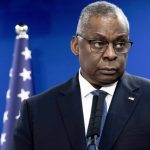Anthony Kim, Derrick Morgan
In his November 7, 2017, speech to South Korea’s National Assembly, then-President Donald Trump unambiguously noted that “this alliance between our nations was forged in the crucible of war and strengthened by the trials of history.” He further underscored his belief “that the Republic of Korea, which has become a tremendously successful nation, will be a faithful ally of the United States very long into the future.”REF
The Republic of Korea is in fact one of the best examples of an ally putting its alliance with the United States into real, practical action for lasting peace and prosperity. Since the signing of the Mutual Defense Treaty in 1953, time and time again, South Korea has proven to be a reliable and loyal U.S. ally. Some nations in NATO, for example, have yet to meet their pledge to spend at least 2 percent of their gross domestic product (GDP) on defense. South Korea, on the other hand, has one of the world’s most capable militaries and spends well above 2 percent of its GDP on defense.
More than ever, it is in the clear interest of the second Trump Administration and the new Congress to build on that steadfastness and notch up the pivotal partnership to the next pragmatic level. Not only will a strong alliance deter adversaries in East Asia, but South Korea has real potential to enhance the alliance’s capabilities in coming years, particularly given that America intends to strengthen the supply chains of freedom, security, and prosperity by working with willing allies like South Korea.
The U.S.–ROK Alliance: Fulfilling Its Promise and How More Can Be Accomplished
The Republic of Korea is more than just another ally of the United States. South Korea is an indispensable anchor of America in the Indo-Pacific region. Like the special relationship with Great Britain that ties the United States to the European continent across the Atlantic, » Read More
https://www.heritage.org/global-politics/report/agenda-the-us-south-korea-strategic-economic-partnership-2025-and-beyond






